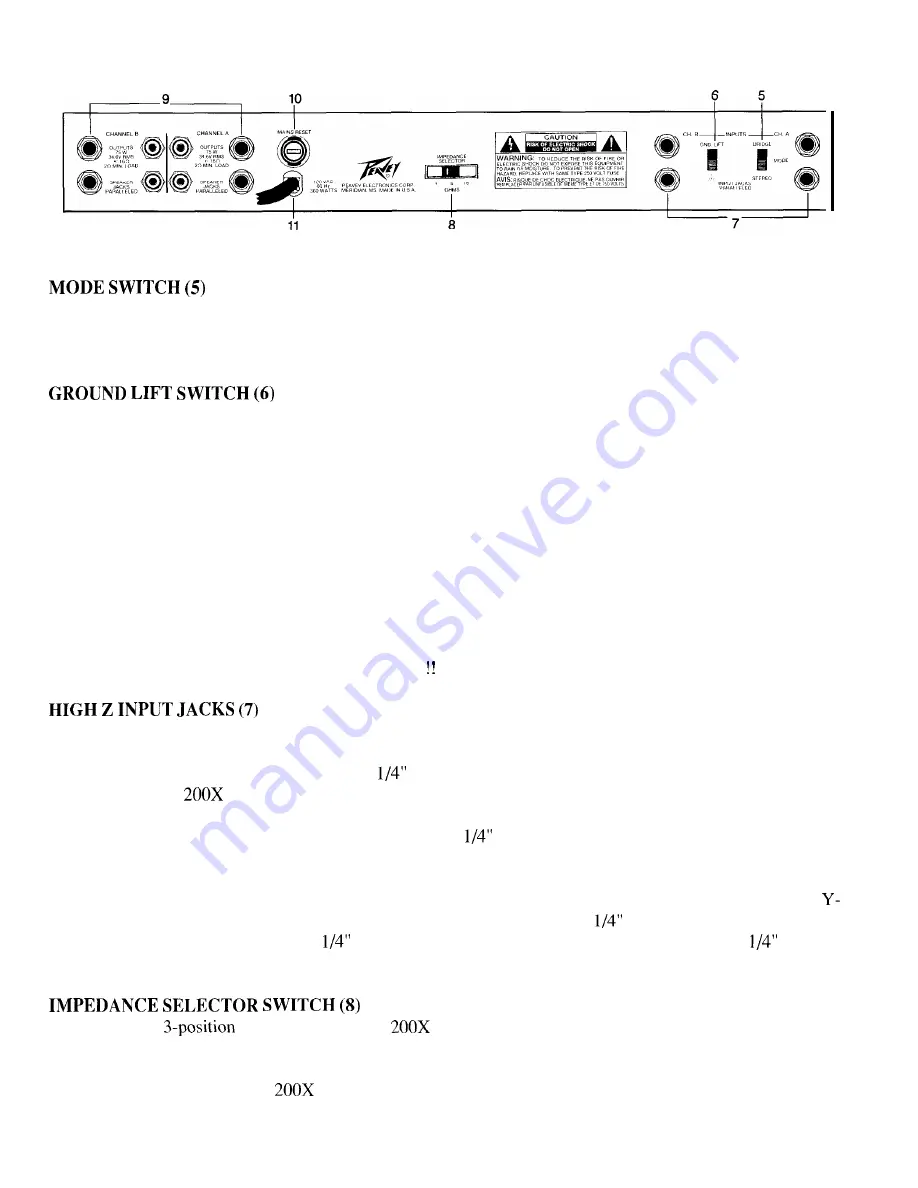
This switch is used to select either STEREO or BRIDGE mode of operation. Care should be exercised whenever
the BRIDGE mode is selected. Accidental selection of this mode could damage loudspeakers, particularly in
BIAMPED systems. (The BRIDGE mode will be covered in greater detail later in this manual.)
This switch is used to disconnect the unit’s signal ground (both input and output) from the “chassis ground.”
Chassis ground is the chassis, itself, which is electrically grounded through the rack mounting screws to the
external rack system and through the mains line cord via the large ground pin to the mains ground. It is often
advantageous to “lift” the signal ground from chassis ground to eliminate a “ground loop” which has caused
unwanted ground current in the signal cables between the external preamp and this power amplifier. Such
conditions can create excessive hum levels in the power amplifier output and render the system useless in low
level applications. In this case “lifting” the ground should solve this hum problem. Ground lift is selected when
the switch is in the upper position. If lifting the ground does not eliminate a particular hum problem, we recom-
mend you defeat the ground lift feature. (Please note that using this ground lift feature still leaves the chassis
itself grounded electrically through the mains line cord.) Having the chassis grounded avoids any possibility of
an electrical shock or a fire hazard. This ground lift feature should never be confused with the practice of
“floating” the large ground pin at the AC mains receptacle to eliminate the ground loop. Floating the ground pin
on any electrical equipment is just asking for trouble!
Two parallel (bridged) input jacks are provided for each channel. This allows for one to be used as a conven-
tional input and the other to be used simultaneously as a “line out” (Y-cord) to connect to another input jack on
this amplifier or to other equipment. All these
jacks are stereo (RING, TIP, AND SLEEVE), and the input
circuitry of the CS
is full differential, allowing a balanced input capability. As usual, the tip is the positive
input, the ring is the negative input, and the sleeve is input ground. To use the balanced input feature, one must
employ a two conductor shielded cable fitted with a stereo
plug. A conventional patch cord using single
conductor shielded cable fitted with a regular tip/sleeve plug can be used, if desired, but then the input is NOT
BALANCED! Fully balanced systems are the obvious choice of most professionals, but usually such systems
will employ an XLR connector. In this case a suitable XLR to phone plug adaptor must be used. Also, if the
cord feature is used to patch to another input from the parallel input jack, the
cord used must be stereo for
balanced or mono for unbalanced. If a
mono cord is used to parallel inputs from a balanced or
stereo
input, the system will be rendered unbalanced.
This switch is a
type allowing the CS
to be converted to either a 4 ohm, 8 ohm, or 16 ohm
amplifier. This selection switch is actually changing electrical “taps” on the specially designed toroidal power
transformer and, thereby, selects three different internal “rail” voltages. This feature is not found on many power
amplifiers, and it makes the CS
a very unique and flexible unit, permitting it to be used with virtually any
impedance loudspeaker load. When a particular impedance is selected (for example, 8 ohms), the internal power
4
Summary of Contents for CS 200X
Page 1: ......






























